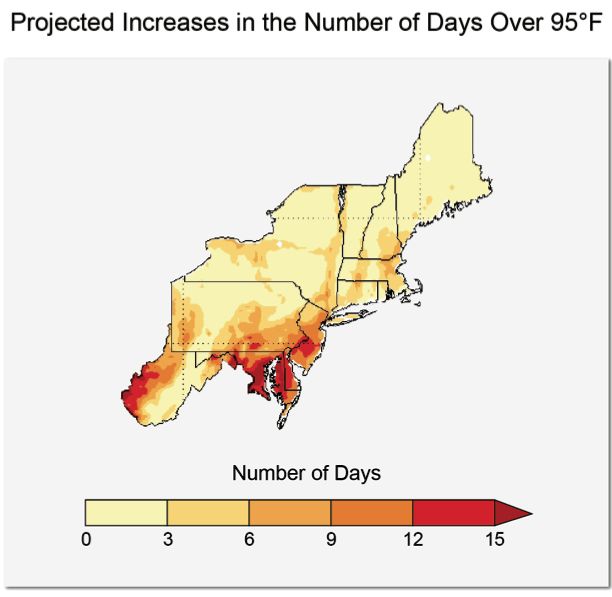Benchmarks to Test Gov. Christie’s Sandy Rebuild Plan Today
Benchmarks to Evaluate the Governor’s Plan
According to today’s Bergen Record, Governor Christie will announce his post Sandy Rebuild standards and going forward plan today: Christie to announce rebuilding standards in Seaside Heights.
He said on his monthly “Ask the Governor” radio show Wednesday night that he expected to release the state’s new rebuilding standards by the end of the week. Those standards, setting requirements for structures rebuilt after superstorm Sandy, are intended to give homeowners greater certainty when deciding whether or how to rebuild. New federal requirements will not be released for another 18 to 24 months, Christie said.
At his 100th town hall-style event in Stafford last week, he said he was crafting the new regulations himself.
“My goal is to try to give you the most aggressive protective standards I can give you,” he said in Stafford. “If they decide to lower them later on, then you’ll benefit from that in your flood insurance premiums because you’ll be built to a higher standard, the federal standard will be a little bit lower and then your flood insurance premiums will go down.”
He said he doesn’t want people rebuilding based on old standards because as the flood maps change, insurance premiums would go up.
So, in advance of those standards, I thought I’d lay out a few benchmarks to evaluate them:
I) Climate change – Sea Level Rise, Storm Surge, Vulnerability/Adaptation – Need to Update State Flood Hazard Maps, both inland and Coastal
The Governor must acknowledge that climate change is real, man made, and played a role in Sandy (see: Critics: Christie Deep-Sixed Climate Change Prep).
According to Georgetown University Climate Center, NJ is the only northeastern state without a climate change adaptation plan – a serious deficiency noted in a recent federal Report:
Of the 12 states in the Northeast, 11 have developed adaptation plans for several sectors and have released, or plan to release, statewide adaptation plans (Georgetown Climate Center 2012).
Will the press ask Gov. Christie about that??
FEMA’s recently proposed flood maps do not account for Sandy elevations or climate change impacts of sea level rise, storm surge, and increasing storm severity . Therefore, the Governor’s rebuild elevations and locations must consider these factors (see: NEW JERSEY YET TO COME TO GRIPS WITH POST-SANDY FLOOD RISKS – Coastal Maps Do Not Account for Climate Change Effects; Inland Maps Decades Old
The Governor must pledge to take concrete actions to reduce greenhouse gas emissions, accelerate the transition to renewable power, and require vulnerability assessment and adaptation planning across state and local government. See:
- Christie Administration Outsources Climate Change Adaptation Planning
- Leadership Matters – How DEP Buried Report on Coastal Storm Risks
II) Bans on Rebuilding in High Hazard Areas – Acquisition and “Strategic Retreat”
Rebuilding in certain low lying locations that were inundated by Sandy or otherwise certain to be washed out again must be restricted, if only to avoid repeat claims. A policy of gradual “strategic retreat” must be acknowledged as the way forward, not rebuild the mistakes of the past.
DEP’s 309 Coastal Hazard Assessment Reports have long explicitly recognized that “strategic retreat” policy option- a finding and a policy that has changed under Gov. Christie – the most recent 309 Report excluded the “strategic retreat” concept. Here are the prior DEP findings that have been eliminated:
Titus demonstrates (link) that in certain instances, structural engineering solutions will not be practical or economically feasible. In these cases future public and private development and redevelopment must be directed away from the hazardous areas. While some derogatorily refer to this option as “retreat,” from the perspective of sound planning based on the best available science, the concept actually involves “strategic adjustment.” Prudent planning requires that we expand upon the existing studies of the societal, economic, and environmental costs of possible mitigative actions while the greatest number of alternatives exist.
[Read full 2006 DEP 309 Report]
III) Proposal to Eliminate the Right to Rebuild and Close CAFRA Loopholes
Current state law provides a right to rebuild and numerous loopholes, including CAFRA 24 unit jurisdiction. The Gov. must announce a legislative initiative to repeal the right to rebuild and reform these flawed laws in light of new science and Sandy experience.
IV) Former DEP Commissioner Mauriello Recommendations
Former DEP Commissioner Mark Mauriello, a 30+ year coastal expert, announced a series of rebuild recommendations. See this for details: A Path Forward on the Shore
V) President Obama Executive Order Policies
President Obama issued an Executive Order creating a Sandy rebuild Task Force and a set of policies to guide national reform efforts. See this for details: Obama Executive Order on Sandy Provides Sharp Contrast With NJ Gov. Christie’s Response
VI) Governor Cuomo’s Policies and Programs
NY Governor Cuomo recently announced a set of state initiatives in his State of the State address. See this for details: Stunning Contrast Between NY Gov. Cuomo and Christie State of State Addresses
VII) State Regulatory Teeth – No Reliance on Home Rule and Local Control
The Governor and DEP Commissioner Martin have said – numerous times – that rebuilding decisions must be made by private individuals, market forces, and local government policies. Both have denied a strong state role and DEP has deregulated both rebuilding of both public infrastructure and private development. Those policies and comments must be walked back.
Rebuilding must be guided by State regulatory mandates.
The DEP has outsourced adaptation planning to a private group and made the ssue a voluntary incentive based policy. DEP’s most recent 309 Assessment Report noted:
Climate change planning and adaptation strategies
Since the last assessment, the Coastal Management Office has dedicated 309 funding to the development of ‘Getting to Resilience,’ a questionnaire to help local decision makers identify ways to decrease their vulnerability and improve their resilience to coastal hazards and/or sea level rise through planning, municipal codes, and emergency preparedness and response. By working with the New Jersey Department of Environmental Protection’s Office of Climate and Energy and statewide partners, the New Jersey Coastal Management Office is presently working to incorporate the questionnaire as an action item within Sustainable JerseyTM, which is a certification and incentive program developed by a collaborative effort of state, academic, and non-profit groups to promote sustainable community initiatives. Sustainable JerseyTM provides communities with mandatory actions to improve their long-term sustainability, in addition to allowing them the flexibility to improve their longevity and character through changes in municipal planning, regulations, and creative grassroots initiatives. By participating in Sustainable JerseyTM, municipalities receive a comprehensive package of tools, guidance materials, training, and financial incentives. Launched in 2009, nearly fifty coastal communities are currently participating in the program.
VIII) Financial Resources
The Gov. must open the doors on how federal and state rebuild money will be spent.
IX) Transparent Planning Process, not “Rebuild Czar”
The Gov. must provide a transparent and participatory planning process for making decisions that will affect the land use pattern and future of the shore.
The Governor’s “Rebuild Czar” lacks transparency, participation, and accountability – he must not be allowed to completely control decsion-making and policy (see: NJ Gov. Christie Slams Door Shut on Coastal and Climate Change Reforms In Wake of Sandy – Appoints Corporate Crony As Czar to Oversee Redevelopment
X) Natural dunes and coastal processes – not engineering – must be basis of planning and a top priority
The Governor has made numerous highly misleading statements alleging that “engineered” beaches protected coastal development.
The Gov. must distinguish the functions of natural dunes from beach replenishment.
Any rebuild plan must be based upon and “Design with Nature” see: A Dirge To McHarg and Mumford – Who Are Rolling Over in Their Graves







